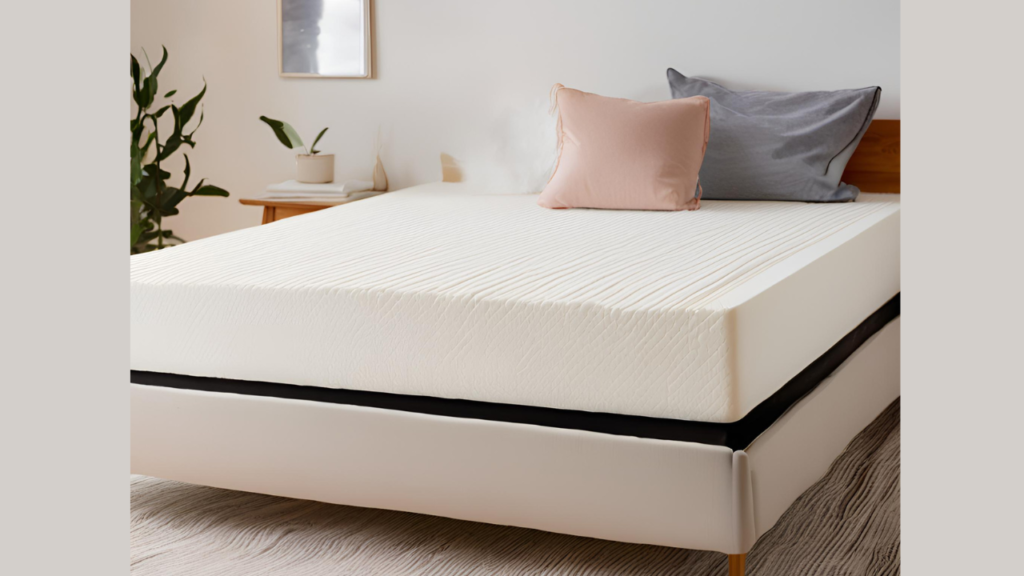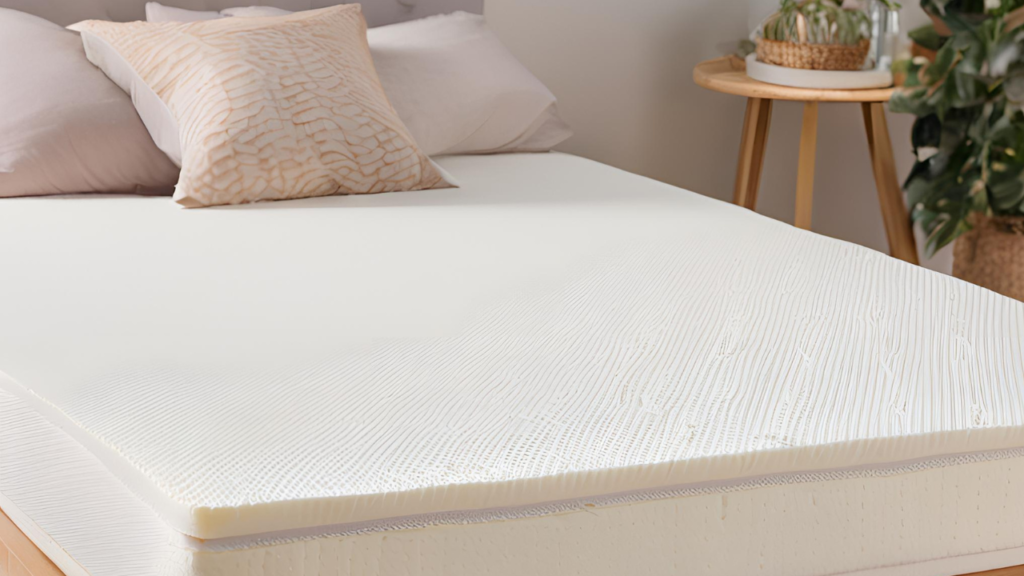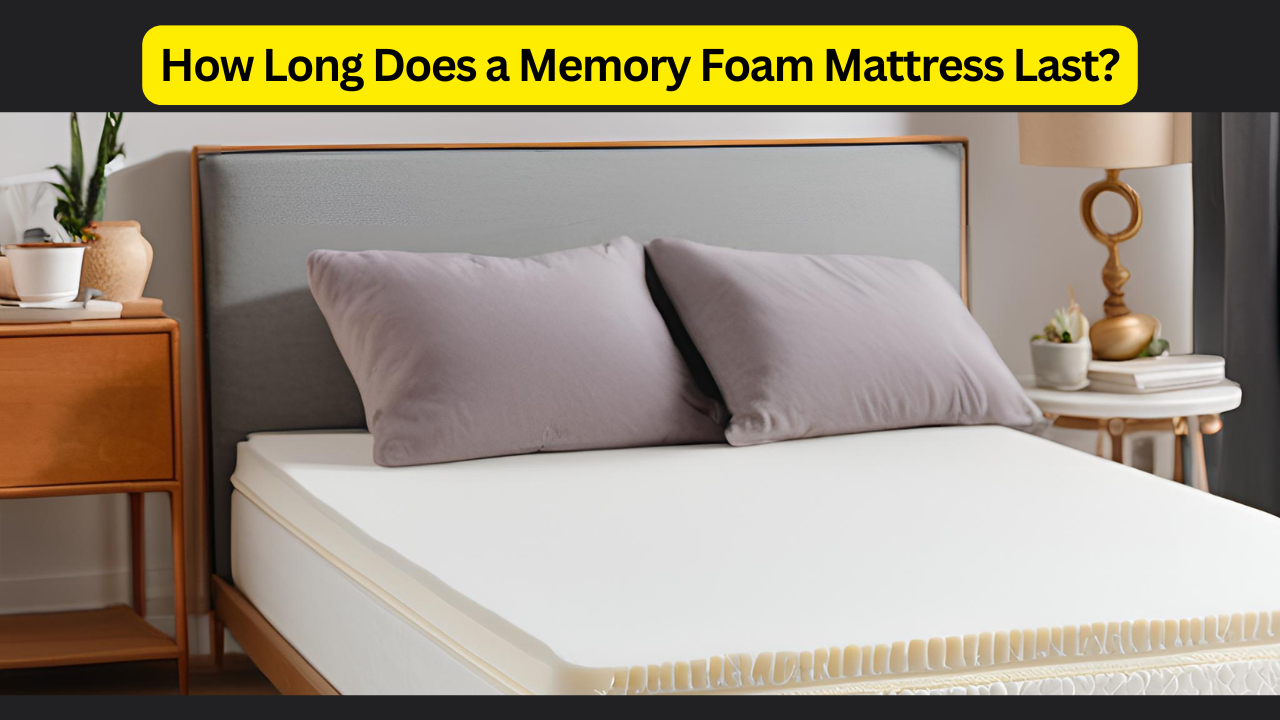Investing in a memory foam mattress promises nights of comfort and support, but like any bedding, it doesn’t last forever. While the luxurious feel of a memory foam mattress offers excellent pressure relief and contours to the body, wear and tear are inevitable over time. Most sleepers wonder just how long their memory foam mattress will maintain its comfort and structural integrity. The lifespan of these mattresses varies based on several factors such as material quality, care routines, and usage habits. Understanding these aspects can help extend a mattress’s life, ensuring restful nights for years to come.
How Long Does a Memory Foam Mattress Last?

A memory foam mattress typically lasts between 7 to 10 years. However, its longevity can vary based on the quality of the materials, the frequency of use, and how well it is maintained. Higher-density foam mattresses tend to last longer, while regular cleaning and using a mattress protector can also extend their lifespan. Eventually, signs like sagging, loss of support, and discomfort will indicate that it’s time to replace the mattress.
What is Memory Foam?
Memory foam, also known as viscoelastic foam, is a material that was originally developed by NASA in the 1960s to improve the safety of aircraft cushions. It is known for its ability to conform to the body in response to heat and pressure, providing excellent support and comfort.
History of Memory Foam
Initially, memory foam was used in medical settings for bedridden patients to prevent pressure sores. It wasn’t until the 1990s that memory foam started gaining popularity in the consumer market, particularly for mattresses and pillows.
Types of Memory Foam Mattresses
There are several types of memory foam mattresses, including traditional memory foam, gel-infused memory foam, and plant-based memory foam. Each type offers unique benefits in terms of cooling, support, and eco-friendliness.
Benefits of Memory Foam Mattresses
Comfort and Support
Memory foam mattresses are renowned for their ability to contour to the shape of your body. This contouring effect helps to distribute body weight evenly, reducing pressure points and providing exceptional support for the spine and joints.
Pressure Relief
The adaptive nature of memory foam allows it to relieve pressure on sensitive areas such as the hips, shoulders, and back. This is particularly beneficial for individuals with chronic pain or those recovering from injuries.
Motion Isolation
One of the standout features of memory foam is its ability to absorb movement. This means that if you share your bed with a partner, their movements are less likely to disturb your sleep, leading to a more restful night.
Durability
While memory foam mattresses are generally durable, their lifespan can vary depending on several factors. High-quality memory foam mattresses can last between 7 to 10 years, but proper care and maintenance can extend their life even further.
Factors Influencing Mattress Lifespan

Quality of Materials
The quality of the materials used in a memory foam mattress is a major determinant of its lifespan. Higher-quality foam tends to retain its properties and support over a longer period, whereas lower-quality foam may degrade more quickly.
Density of Foam
Density is a key factor in the durability of memory foam. Higher-density foams are typically more durable and provide better support over time. Look for mattresses with a density of at least 4 to 5 pounds per cubic foot for longer-lasting performance.
Frequency of Use
How often you use your mattress also affects its lifespan. A mattress that is used every night will wear out more quickly than one that is used less frequently, such as in a guest room.
Weight Distribution
The weight of the sleeper(s) and how it is distributed across the mattress can influence its longevity. Heavier individuals may find that their mattresses wear out faster, particularly if the weight is concentrated in specific areas.
Proper Care and Maintenance
Regular Cleaning
Keeping your memory foam mattress clean is essential for its longevity. Vacuuming the mattress regularly can help remove dust and debris, while spot cleaning can address spills and stains.
Rotating the Mattress
Unlike traditional mattresses, memory foam mattresses typically should not be flipped. However, rotating the mattress 180 degrees every few months can help ensure even wear and prolong its life.
Using a Mattress Protector
A high-quality mattress protector can shield your memory foam mattress from spills, stains, and allergens. This added layer of protection can help maintain the mattress’s condition and extend its lifespan.
Signs It’s Time to Replace Your Mattress
Sagging and Indentations
One of the most obvious signs that your memory foam mattress needs replacing is visible sagging or deep indentations. These indicate that the foam has lost its ability to bounce back and provide adequate support.
Loss of Support
If you start waking up with aches and pains or find that you are not as well-supported as you used to be, it may be time to consider a new mattress. Loss of support can affect your sleep quality and overall health.
Increased Allergies
Over time, mattresses can accumulate dust mites, mold, and other allergens. If you notice an increase in allergy symptoms, it could be a sign that your mattress needs to be replaced.
How to Extend Your Mattress Lifespan
Choosing the Right Base
Using a proper base or foundation for your memory foam mattress is crucial. A supportive base can prevent sagging and ensure the mattress maintains its shape and support over time.
Avoiding Excessive Weight
While memory foam mattresses are designed to support a range of body weights, it’s important not to exceed the manufacturer’s weight recommendations. Excessive weight can accelerate the wear and tear on the foam.
Temperature Control
Memory foam can be sensitive to temperature. Keeping your bedroom at a moderate temperature can help maintain the foam’s properties and extend the life of your mattress.
Comparing Memory Foam to Other Mattresses
Latex Mattresses
Latex mattresses are known for their durability and natural materials. They offer a similar level of support and pressure relief as memory foam but tend to have a longer lifespan, often lasting up to 15 years.
Innerspring Mattresses
Innerspring mattresses use coils for support and typically have a shorter lifespan compared to memory foam, usually around 5 to 8 years. They also tend to offer less pressure relief and motion isolation.
Hybrid Mattresses
Hybrid mattresses combine the best of both worlds, featuring a mix of memory foam and innerspring coils. They provide good support and comfort and typically have a lifespan similar to memory foam mattresses, around 7 to 10 years.
Buying a New Memory Foam Mattress
What to Look for in a New Mattress
When shopping for a new memory foam mattress, consider factors such as foam density, mattress thickness, and any additional features like cooling technology. It’s also important to choose a mattress that suits your sleep preferences and body type.
Budget Considerations
Memory foam mattresses are available at a range of price points. While it can be tempting to go for the cheapest option, investing in a higher-quality mattress can pay off in the long run with better comfort and durability.
Warranties and Return Policies
Most reputable mattress manufacturers offer warranties that cover defects and premature wear. Be sure to check the warranty and return policy before making your purchase to ensure you’re protected.
FAQs about Memory Foam Mattresses
How do I clean my memory foam mattress?
To clean a memory foam mattress, vacuum it regularly to remove dust and debris. For spills and stains, use a mild detergent and water, and gently spot-clean the affected area. Avoid using excessive water, as memory foam is sensitive to moisture.
Can I flip my memory foam mattress?
No, memory foam mattresses are designed to be used on one side only. However, you should rotate your mattress 180 degrees every few months to ensure even wear.
How can I make my memory foam mattress last longer?
To extend the lifespan of your memory foam mattress, use a mattress protector, clean it regularly, rotate it periodically, and ensure it has a supportive base. Avoid exposing the mattress to excessive weight and extreme temperatures.
What is the best base for a memory foam mattress?
A solid foundation or platform bed is the best base for a memory foam mattress. Slatted bases can also work, provided the slats are close enough together to support the mattress evenly.
Are memory foam mattresses good for back pain?
Yes, memory foam mattresses are often recommended for back pain because they contour to the body’s shape, providing support and pressure relief to the spine and joints.
How often should I replace my memory foam mattress?
On average, memory foam mattresses should be replaced every 7 to 10 years. However, this can vary depending on factors such as the quality of the mattress, how well it’s cared for, and how often it’s used.
Conclusion
Caring for a memory foam mattress involves regular cleaning, rotating, and protecting it with a mattress cover. These steps can significantly extend the lifespan of your mattress, ensuring you enjoy its comfort and support for years to come.
Final Thoughts on Memory Foam Durability
Memory foam mattresses offer unparalleled comfort and support, making them a popular choice for many sleepers. By understanding the factors that influence their lifespan and taking proper care of them, you can maximize the value of your investment and enjoy restful sleep for many years.
